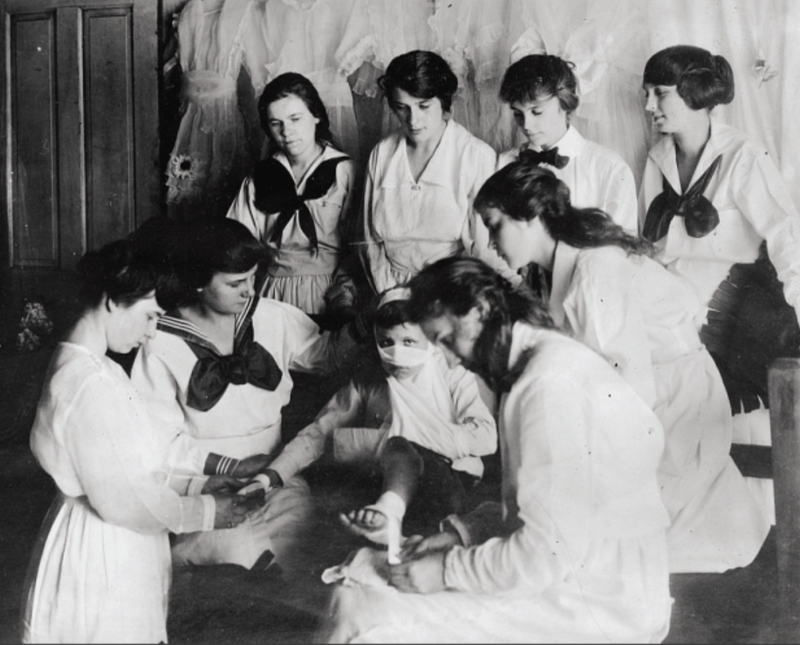Health and Safety Education and Training
At the start of the 20th century, the American Red Cross increased its activities to include health and safety education and training. First aid, water safety, and public health nursing programs were the organization’s first training programs. Educational courses continued after World War I and expanded to include programs in safety training, accident prevention, home care for the sick, and nutrition education. In the 1920s, the Red Cross initiated a campaign for a healthier nation, and in 1921, 22,006 children were instructed in how to select and prepare healthy meals.
With the onset of World War II, first aid and nursing programs helped train thousands of Red Cross nurses. Locally, the Maryland State Teachers College (now Salisbury University) campus transformed into a simulation center for loading and unloading wounded into ambulances. Red Cross training remained present on the campus after the war and the school newspaper often reported that first aid classes were held in the gym. Virginia Gardner, a student at Maryland State Teachers College, reflected in the 1943 Evergreen yearbook that her first aid training had also assisted her in the classroom often enough that some of her younger students inquired “if you have to be a doctor before you can become a teacher.”
In the 1960s, the Red Cross published pamphlets such as Education for Social Responsibility and The University in the Changing Communities: New Directions in Social Responsibility for distribution to college-aged students on the topic of civic duty. The pamphlets critiqued American college students as self-absorbed and challenged them to use their education to better their community and American society as a whole.
By the 1990s, and as medical knowledge improved, the American Red Cross offered training in CPR/AED and HIV/AIDS education. Babysitting and caregiving, basic life support, and emotional care are now offered in addition to the traditional first aid and swimming training. Many American Red Cross training courses, including disaster response education, are now offered online.
Silent 16mm film of the Wicomico County Chapter of the American Red Cross performing ambulance and stretcher exercises on the grounds of the State Teachers College (now Salisbury University), circa 1941.

